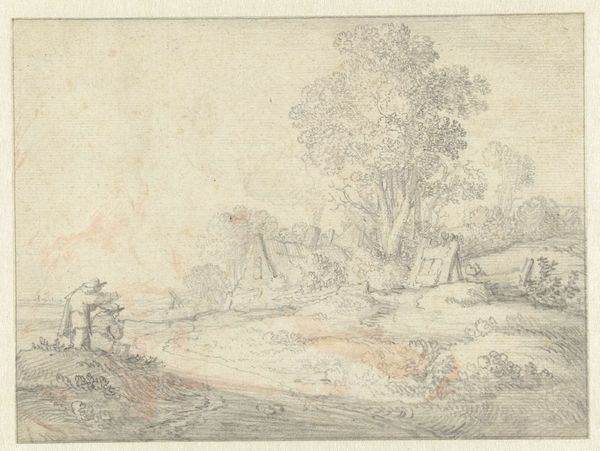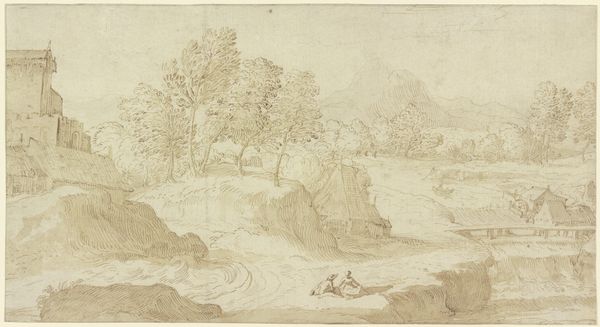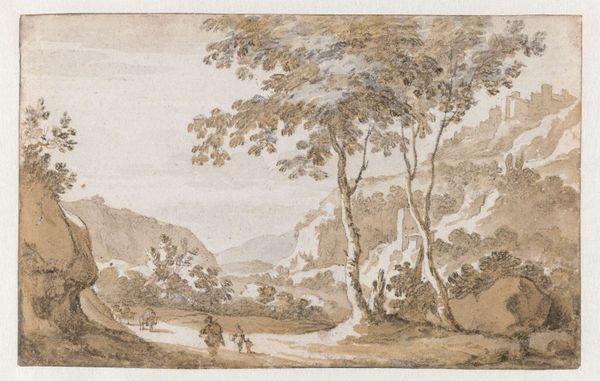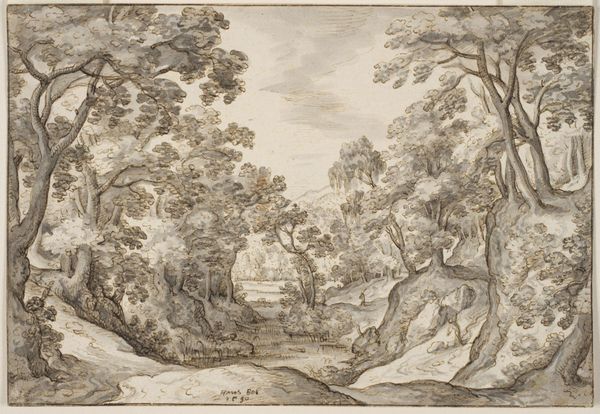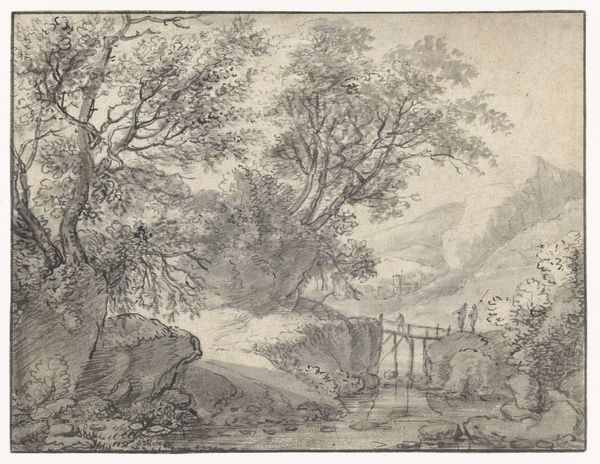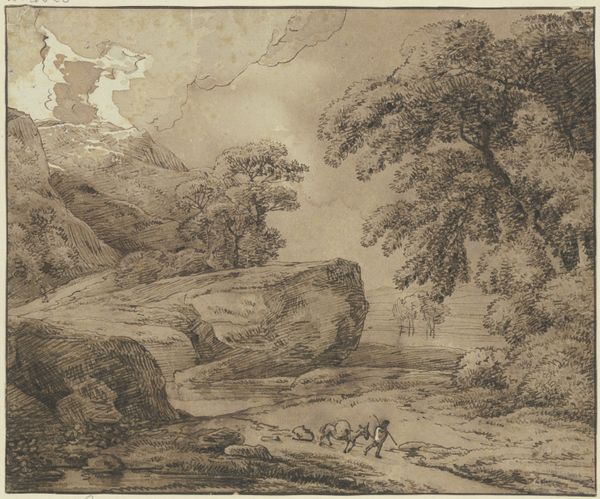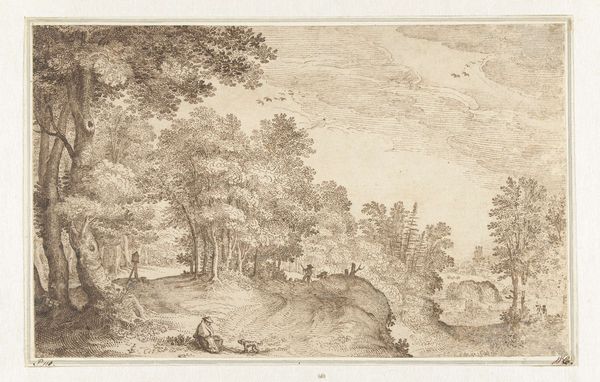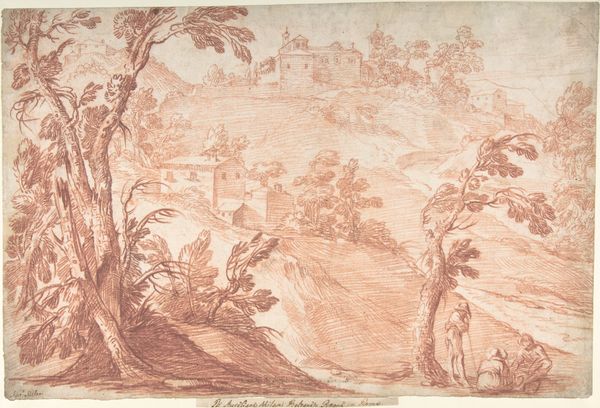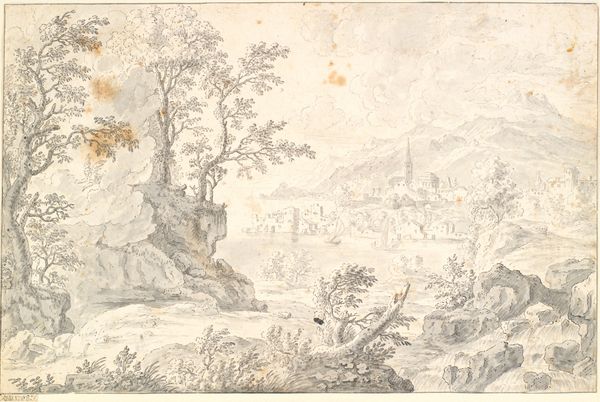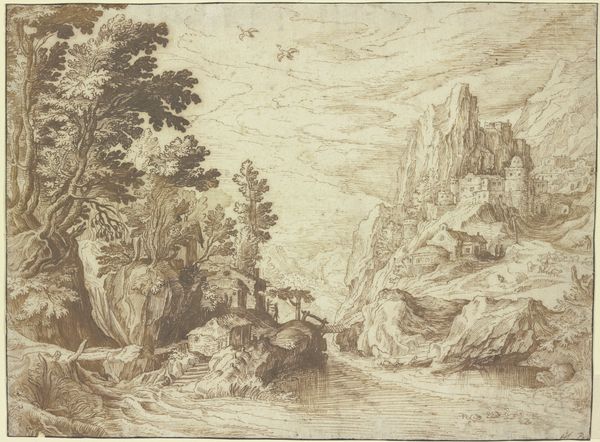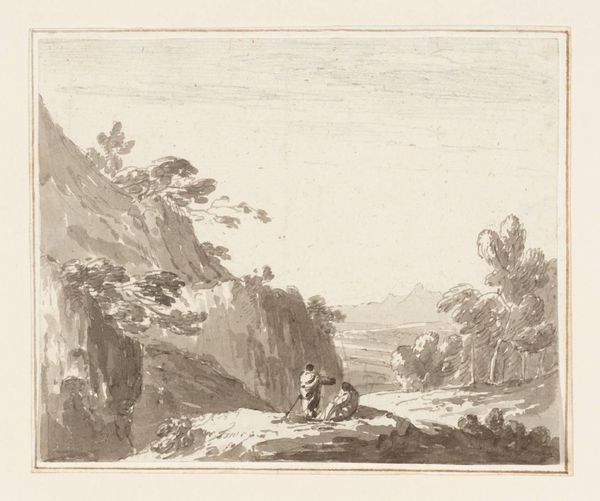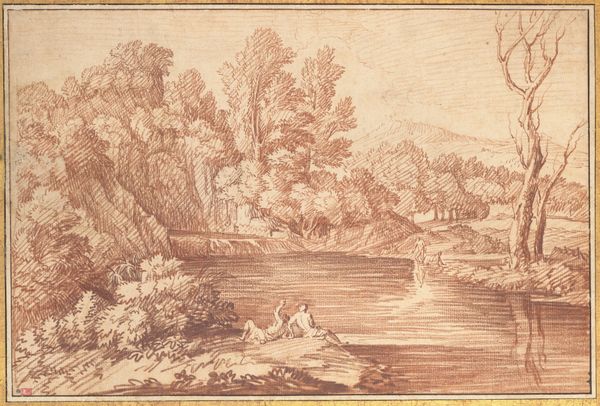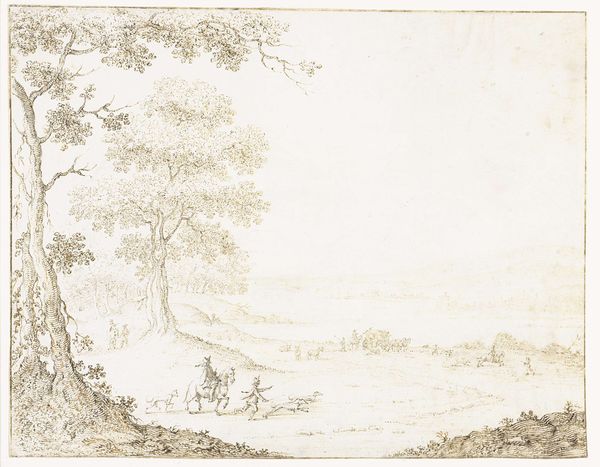
drawing, ink
#
drawing
#
baroque
#
landscape
#
etching
#
ink
#
northern-renaissance
Dimensions: height 165 mm, width 225 mm
Copyright: Rijks Museum: Open Domain
Curator: Welcome! Today, we'll be exploring a drawing titled "Berglandschap met twee figuren op een smalle brug" attributed to Pieter Dircksz Santvoort, created sometime between 1615 and 1653. It’s rendered in ink. Editor: It strikes me as quite serene, almost dreamlike. The limited palette certainly contributes, lending a sense of faded memory. What catches my eye is the delicate line work contrasted against these broad washes. Curator: Yes, that contrast is important. There is a symbolic weight to the use of seemingly humble materials. Santvoort has achieved such detailed rendering, using basic drawing materials, with an undeniable emotional presence that speaks volumes about man's connection with the sublime landscape. The bridge is small but clearly supports two figures, seemingly undisturbed amidst the grandeur of nature. Editor: I agree. There's definitely an element of drama even in this small format, given the contrasts between the monumental landscape and these two figures carefully navigating that very precarious little bridge, suspended above what looks like a raging stream. One gets a sense of the raw energy harnessed through rudimentary, accessible materials like paper and ink. I’m interested in the type of ink he employed – was it easily sourced, impacting his design choices through limiting colour gradients? Was this choice driven by pure aesthetic sensibility, perhaps a focus on linear depiction over tonal detail? Curator: Those are compelling questions and reflect well the impact the medium had. The limited use of colour is deliberate, emphasizing clarity, rather than illusion. Think of what landscapes represent during the Baroque: reflections on mortality and transcendence, invitations to contemplate God's creation. This vista inspires feelings, acting like metaphors and memories, speaking to cultural perceptions of nature, which he distills with a minimal use of colour. Editor: Exactly. It goes beyond mere representation. I wonder if this work served as a preparatory sketch or holds standalone merit as a statement. Is it part of his larger production process, documenting or perhaps commenting on the transformation of physical resources by communities in a changing landscape? It would be very enlightening to uncover what sort of labor and materials formed that bridge, juxtaposed next to our present view of the artistic process! Curator: Such details would certainly add layers to our understanding! Ultimately, the drawing offers a potent meditation on transience within an awe-inspiring natural order. Editor: I appreciate the chance to reflect upon the simplicity of form contrasted alongside a potent rendering of grand scenes crafted with economical means. It calls to mind questions about material consumption and our relationship with the surrounding landscape in past eras as well as today.
Comments
No comments
Be the first to comment and join the conversation on the ultimate creative platform.
